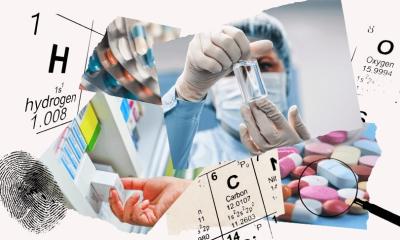Starving a tumour
A possible new cancer therapy
Every developing tissue is supplied by blood vessels with oxygen and nutrients. Tumours grow far more quickly than normal tissues, so have a greater need of nutrients, which is why tumour cells begin to produce growth factors that stimulate the formation of blood vessels.
If this angiogenesis can be prevented, the tumour starves. However, whilst existing anti-angiogenesis drugs eliminate the most important angiogenetic growth factor, they have side effects and also the cancer compensates by producing other growth factors.
Scientists at VIB, the Flanders Institute for Biotechnology, have been investigating the placental growth factor (PLGF) which has been found to only stimulate blood vessel formation in cancer and other diseases, but not in the foetus, young children or pregnant women.
Now, along with the Flanders Institute for Biotechnology and at the Katholieke Universiteit Leuven, the VIB researchers are studying the anti-cancer action of anti-PLGF, in collaboration with the Flemish biotech company ThromboGenics.
Anti-PLGF appears to be not only successful in tumour treatment where current therapies have failed, but also contributes to the greater effectiveness of existing chemotherapy, without side effects. Thus the substance may form the basis for a new cancer treatment.
Under the direction of Peter Carmeliet, and researchers directed by Désiré Collen at ThromboGenics, VIB researcher Christian Fischer and colleagues have been investigating the therapeutic possibilities of anti-PLGF, which retards the action of PLGF. Anti-PLGF not only increases the effectiveness of chemotherapy and the current anti-angiogenesis therapy, but it also inhibits the growth and metastasis of tumours resistant to existing drugs. In contrast to the current therapies, anti-PLGF does not trigger a ‘rescue operation’ in which other growth factors are produced as compensation. Another very important consideration is that anti-PLGF induces absolutely no side effects.
In addition to the possibility that anti-PLGF may prove to be a good cancer treatment with less side effects, it could be used for children and pregnant women. New results also indicate that anti-PLGF can be used to treat diseases of the eye that lead to blindness.
ThromboGenics is working on further development of anti-PLGF as a therapy, and hopes to begin the first clinical tests by the end of 2007.
* Research funding: the EC, ThromboGenics NV and BioInvent, Bristol-Myers-Squibb, German Research Foundation, AACR, EMBO, FWO, Leducq Foundation, Belgian Science Policy, DKH, GOA, IWT and FP-6-Angiostop, and VIB. This research has been conducted by Christian Fischer and colleagues in Peter Carmeliet’s ‘Functional genomics of cardiovascular and neurovascular biology and disease’ research group in the VIB Department of Transgene Technology and Gene Therapy, K.U.Leuven – under the direction of Désiré Collen, who is also the CEO of ThromboGenics.
Scientific publication: The journal ‘Cell’ (Fischer et al., Anti-PlGF inhibits growth of VEGF(R)- inhibitor resistant tumours without affecting healthy vessels).
Source: Evy Vierstraete of VIB, Flanders Institute for Biotechnology
15.11.2007










